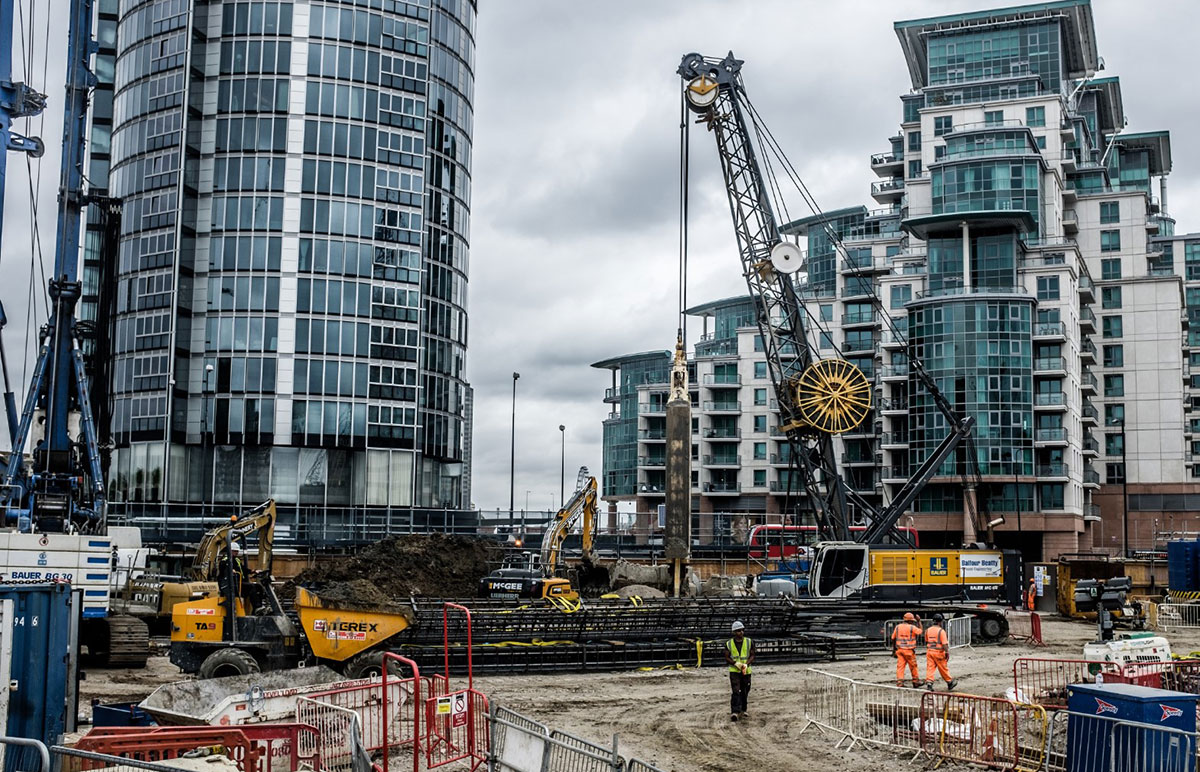The Geotheta PDFs
The Geotheta PDFs
Blog Article
All About Geotheta
Table of ContentsGeotheta Things To Know Before You Get ThisGeotheta Fundamentals ExplainedSome Known Factual Statements About Geotheta All About GeothetaLittle Known Facts About Geotheta.

They carry out website examinations, gather samples, carry out lab examinations, and assess data to examine the suitability of the ground for construction projects - Consulting Engineer. Based upon their findings, geotechnical designers supply suggestions for structure layout, slope stability, retaining structures, and mitigation of geotechnical hazards. They team up with various other specialists, such as engineers, structural engineers, and building and construction groups, to guarantee that geotechnical factors to consider are integrated into the general project style and implementation
By analyzing the actions and homes of soil and rock, they can determine prospective geotechnical hazards such as landslides, soil negotiation, or incline instability. Their competence helps stop failures or crashes that could endanger lives and building. Below are some in-depth tasks and responsibilities of a geotechnical designer: Website Investigation: Geotechnical engineers conduct site investigations to collect information on subsurface problems.
They interpret the data to understand the homes and habits of the dirt and rock, including their stamina, permeability, compaction features, and groundwater problems. Geotechnical Analysis and Layout: Geotechnical engineers analyze the data gathered throughout site examinations to examine the security and suitability of the website for building and construction jobs. They perform geotechnical computations and modeling to evaluate aspects such as birthing capability, settlement, slope stability, side earth stress, and groundwater flow.
The 8-Minute Rule for Geotheta
Structure Design: Geotechnical engineers play an important role in making structures that can securely sustain the designated structure. They analyze the soil conditions and load demands to establish the suitable foundation type, such as shallow foundations (e.g., footings), deep foundations (e.g (https://www.goodreads.com/user/show/180594840-ian-hammond)., heaps), or specialized techniques like soil renovation. They consider aspects such as settlement restrictions, birthing capability, and soil-structure communication to develop optimal foundation designs
They review building and construction strategies, screen site activities, and carry out field evaluations to verify that the layout recommendations are followed. If unpredicted geotechnical issues emerge, they examine the circumstance and supply suggestions for removal or adjustments to the design. Threat Evaluation and Reduction: Geotechnical engineers analyze geotechnical hazards and risks related to the project website, such as landslides, liquefaction, or soil erosion.

Collaboration and Communication: Geotechnical engineers function carefully with various other specialists involved in a job, such as engineers, architectural designers, and construction groups. Effective interaction and collaboration are essential to incorporate geotechnical factors to consider into the overall job design and building process. Geotechnical engineers give technical proficiency, solution queries, and ensure that geotechnical requirements are met.
All about Geotheta
Here are some sorts of geotechnical engineers: Foundation Designer: Foundation designers concentrate on designing and examining foundations for structures. They examine the dirt problems, tons requirements, and website qualities to identify one of the most proper structure kind and style, such as superficial foundations, deep structures, or specialized strategies like pile structures.
They review the variables influencing incline stability, such as soil properties, groundwater conditions, and slope geometry, and develop approaches to stop slope failures and minimize risks. Quake Engineer: Earthquake engineers focus on analyzing and developing structures to stand up to seismic pressures. They assess the seismic threat of a site, assess soil liquefaction possibility, and establish seismic design standards to make certain the security and strength of structures during earthquakes.
They carry out area testing, gather examples, and assess the accumulated information to identify the soil buildings, geologic developments, and groundwater conditions at a site. Geotechnical Instrumentation Designer: Geotechnical instrumentation engineers concentrate on tracking and determining the habits of dirt, rock, and structures. They mount and keep instrumentation systems that check factors such as dirt settlement, groundwater levels, slope activities, and architectural variations to examine efficiency and give early cautions of potential problems.
10 Simple Techniques For Geotheta
They carry out examinations such as triaxial tests, loan consolidation examinations, straight shear examinations, and leaks in the structure tests to gather data for geotechnical analysis and style. Geosynthetics Designer: Geosynthetics designers specialize in the style and application of geosynthetic products, such as geotextiles, geogrids, and geomembranes. They utilize these materials to boost dirt security, strengthen inclines, provide drainage remedies, and control disintegration.
They have a tendency to be investigative people, click this which indicates they're intellectual, introspective, and investigative. They wonder, systematic, reasonable, analytical, and sensible. Some of them are likewise social, implying they're kind, charitable, cooperative, client, caring, helpful, empathetic, tactful, and friendly. Does this noise like you? Take our complimentary job examination to discover if geotechnical engineer is among your top occupation suits.
In the office environment, geotechnical designers make use of specialized software program devices to do computations, produce designs, and analyze data. They prepare reports, evaluation job specifications, interact with clients and employee, and coordinate project activities. The office setting gives a helpful atmosphere for research, analysis, and cooperation with various other specialists entailed in the task.
Fascination About Geotheta
They regularly go to job sites to conduct site investigations, evaluate geotechnical conditions, and collect information for evaluation. These visits include traveling to various locations, sometimes in remote or difficult surfaces. Geotechnical engineers may execute soil sampling, conduct examinations, and monitor building tasks to ensure that the geotechnical elements of the task are being implemented properly.
Geotechnical designers also work in specialized geotechnical laboratories. Geotechnical research laboratory designers function thoroughly in these settings, handling screening equipment, running tools, and videotaping information.
Report this page